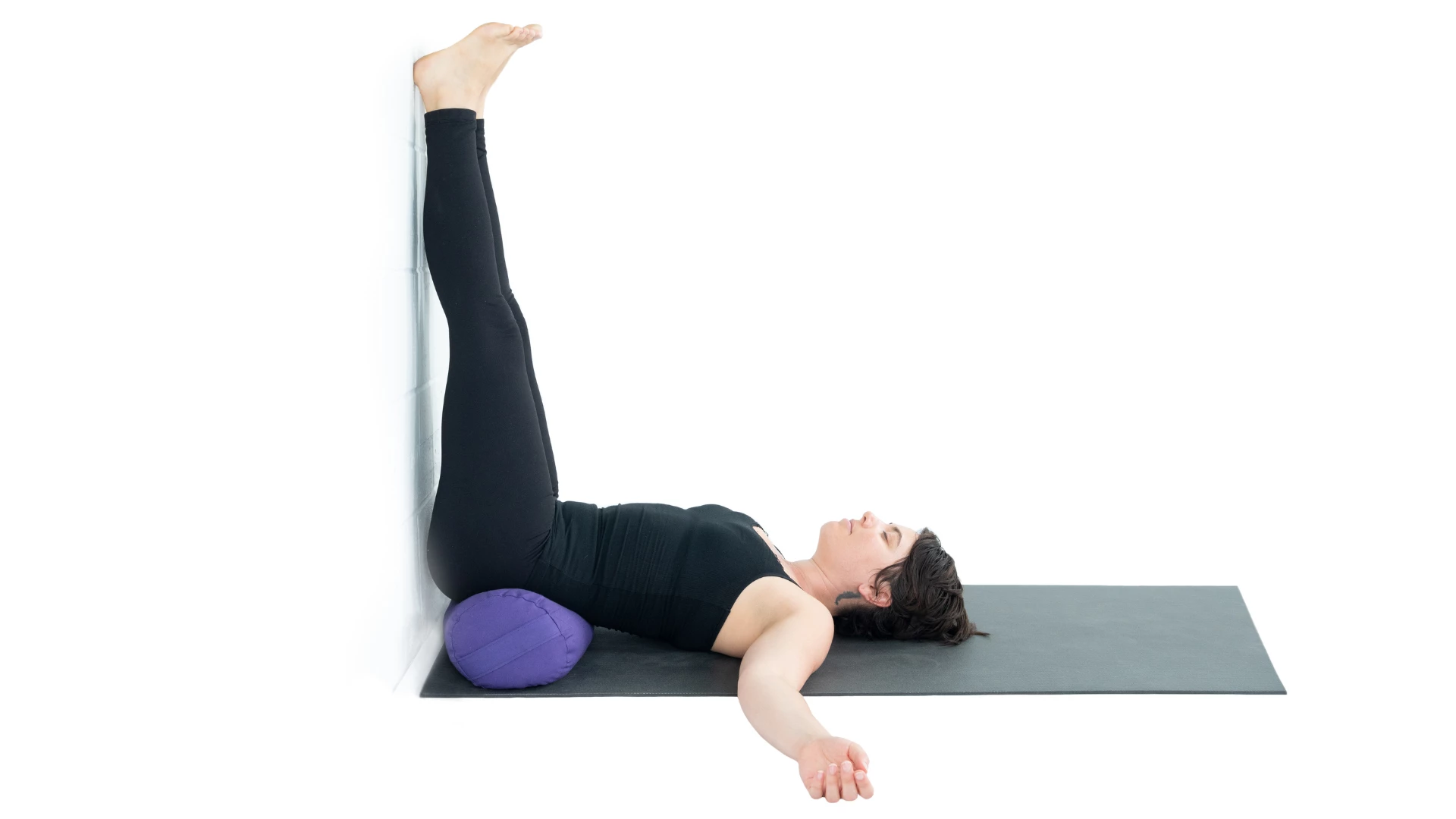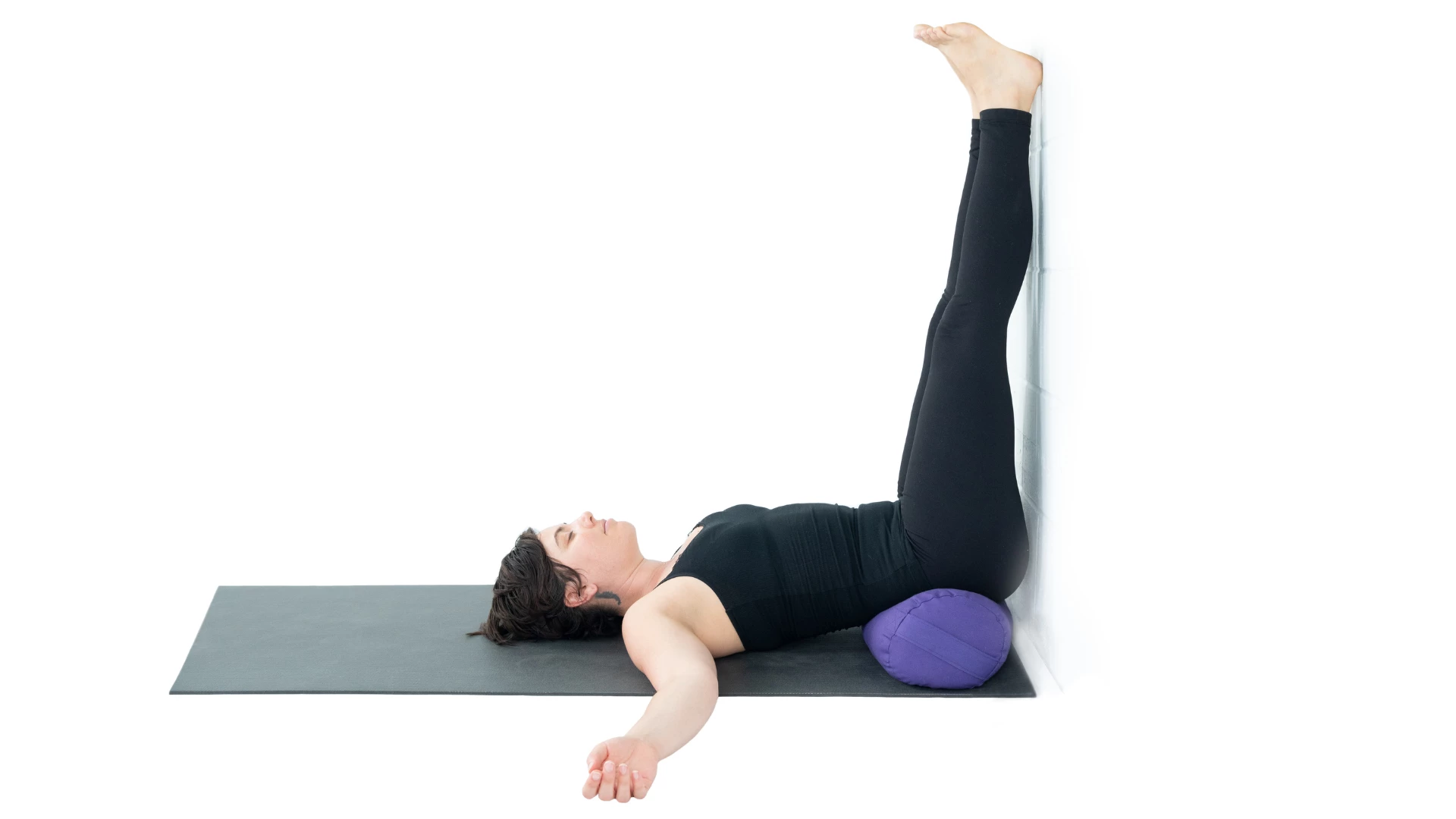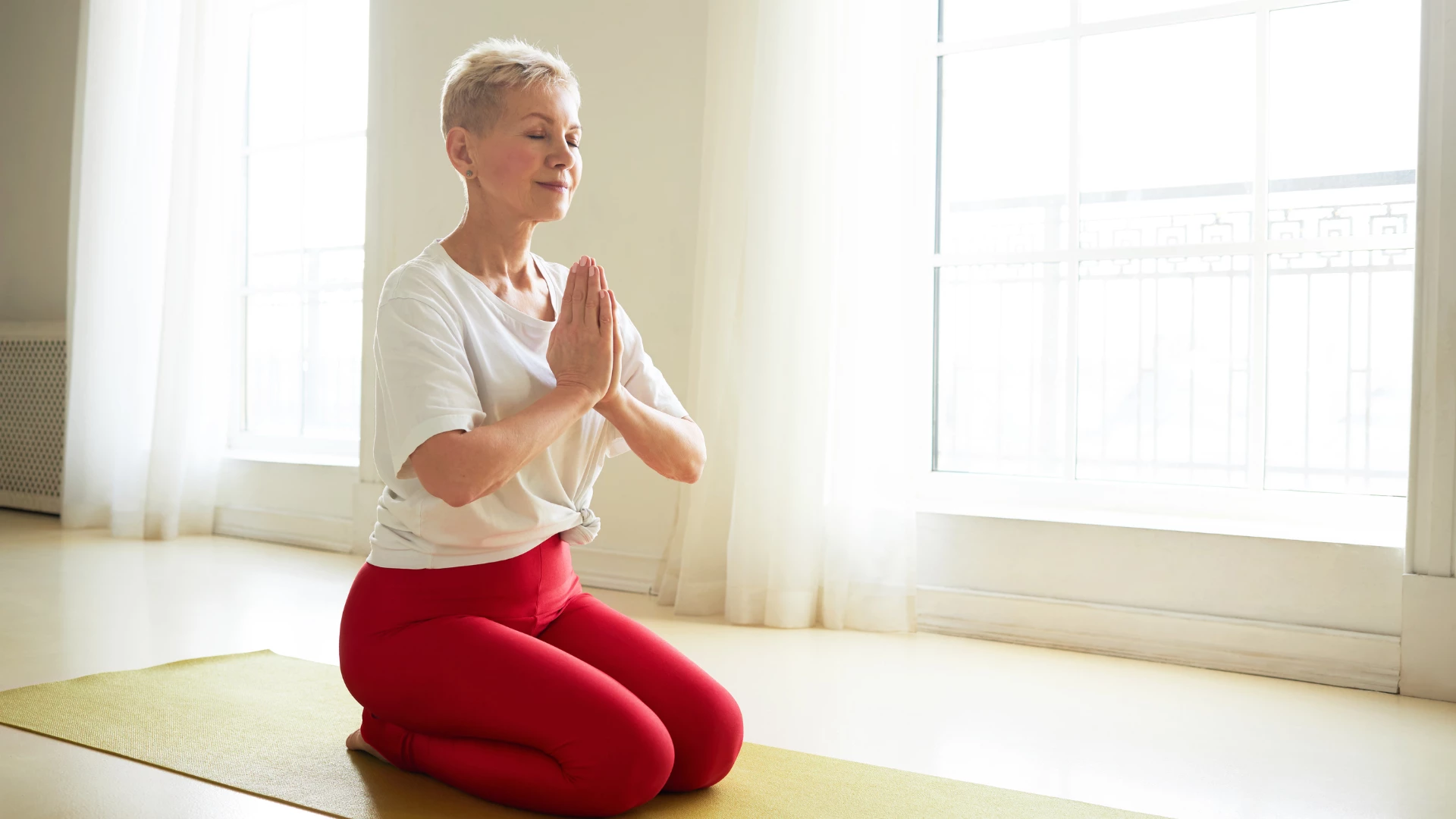Grief and Heartbreak: Relief from Yoga and Beyond

Article At A Glance
There are many types of grief and ways that our minds and bodies react to grief. Often, Restorative Yoga practices can be helpful in healing grief and managing stress.
“No one ever told me that grief felt so like fear. I am not afraid, but the sensation is like being afraid.” —C.S. Lewis
In a post from a few years ago, I wrote that after my mother died, I kept saying, “Why does grief feel so much like stress?” So it was very interesting for me to recently read that quote above from C.S. Lewis—which is in the book Heartbreak: A Personal and Scientific Journey by Florence Williams—that describes the grief Lewis felt when his wife died as feeling “so like fear.”
Of course, fear is one of the feelings caused by extreme stress in the form of the fight-flight-or-freeze response. For me, I associated my reaction to my mother’s death with “stress” in general because the physical symptoms I had were ones I typically experienced when I was stressed out: having trouble sleeping, feeling hyper and agitated, losing my appetite, and so on.
The Effects of Grief and Heartbreak
And it was equally interesting for me to read that for Florence Williams herself, the feeling of heartbreak that she experienced when her husband of 25 years left her included the very same symptoms I felt: insomnia, “extreme agitation,” and weight loss due to loss of appetite.
Williams, who is a science writer, suffered so much over the end of her marriage that she decided to write a book about her experience, including both her personal story and the science behind what she was experiencing, in the hopes of understanding more about what she was going through and seeing if what she learned could help her recover more quickly.

Can Heartbreak Lead to a Heart Event?
One of the important things that Williams learned was that our bodies experience both heartbreak and grief as a form of stress. She quotes Steve Cole, a researcher at UCLA School of Medicine in psychiatry and biobehavioral sciences:
“Our bodies want what they want, warmth and the feeling of being understood by a partner, and now it’s not there. Shock and panic set in.”
In fact, the amount of stress that happens when we lose a partner, whether through death or being “dumped,” as she put it, can be so great that it can lead to a special type of heart attack called Takotsubo cardiomyopathy, which is more common than we might expect. Williams reports that “Takotsubo, which appears to be caused by a sudden rush of stress hormones stunning the heart, represents about two to seven percent of all sudden-cardiac hospital admissions, but the actual incidence may be higher (diagnostic images aren’t always taken).”
Grief and Loss of Security

Williams explains that this stress is “linked to feeling unsafe” because as we human beings evolved, being alone left us vulnerable to danger. So when you’re suddenly alone for the first time, your nervous system goes on high alert, becoming hypervigilant in an attempt to stay aware of and react to any threats in your environment. No wonder you can’t sleep!
There are special aspects to losing a partner because when you sleep in the same bed with someone, your bodies “coregulate,” which means that heart rhythms and other biological processes, such as cortisol levels, align with each other. However, other kinds of losses can trigger the same flood of stress hormones, including the end of any “core relationship.” As Williams says of heartbreak:
“Like grief and shock, the condition can be shared, reflecting the many reasons the heart breaks. We can experience the collective grief wrought by war, violence, and natural disasters, the grief of losing species and habitats to which we feel deeply akin; there’s the collective and individual grief of racial and social injustice, the individual grief of core relationships blown up through death or chronic illness or by someone’s choice.”
How Restorative Yoga Can Help Relieve Grief and Stress
I told my husband that in my case, losing my mother—someone who I always felt had my back and would always help me when I needed help—must have been the same “danger” to my nervous system as being “alone” is, even though I still had a partner. (As adults, when both our parents are gone, we sometimes joke about how we are now “orphans,” but maybe to our nervous systems—provided that we had good relationships with our parents—we actually are orphans.)
So it seems that when I described my grief as feeling so much like “stress,” I was really onto something. At the time, it puzzled me—I was expecting to feel quite different—but I went with my intuition and doubled down on my go-to stress management practices, including a long session of Legs Up the Wall Pose (Viparita Karani) (shown above) with an eye pillow and a calming breath practice (extending the exhalation). At the time, I felt these practices were really helpful in keeping me centered.
Another restorative version practiced with a chair is shown below (practiced with or without the bolster)
Grief is Complicated: Yogic Options for Stress Management
All of this is something to keep in mind when you lose someone or something important to you. Whether someone dies or they “dump” you, or you lose something important due to a natural disaster or societal upheaval, it’s likely you’re experiencing some level of stress. Grief is a complex emotion that has several aspects to it, so I’ve devoted a whole chapter to it in my book Yoga for Times of Change: Practices and Meditations for Moving Through Stress, Anxiety, Grief & Life’s Transitions.
And yoga stress management practices alone aren’t going to cure the ache in your heart. However, stress management practices could improve uncomfortable physical symptoms, such as insomnia, digestive problems, headaches, and so on, and may relieve your emotional suffering.
Because there are so many changes besides heartbreak and loss that cause stress, there are many options beyond yoga practice for managing stress. As you review the various options, be careful to choose only those practices that appeal to you personally at the given time. Keep in mind that if something isn’t working for you, it’s not working for you—try something else instead.
Mindfulness: It’s Not Always Calming
In her book, Williams tries practicing mindfulness meditation because, you know, all meditation is supposed to be calming. But because mindfulness is a practice of bringing awareness to what you’re currently feeling—which can be the opposite of calming—I personally think it’s probably not a good practice for someone who is grieving or brokenhearted unless they have years of experience with the practice.
Yogic concentration meditation, where you concentrate on your breath, a mantra, or a visual image, could be a better choice. If you don’t already have meditation experience, starting a meditation practice when you’re in the throes of grief or heartbreak may not be a good idea.

Also, read...
Dealing with the Difficult Emotions of Loss and Grief – A Somatic Embodiment Approach
Free Yoga Video: Breathing for Pelvic Floor Health: Two Practices to Deepen Your Breath
Related courses
Breath as Medicine: Yogic Breathing for Vital Aging
Yoga and Myofascial Release: Releasing Chronic Tension with the Bodymind Ballwork Method

Nina Zolotow, RYT 500, the author of the forthcoming book “Yoga for Times of Change” and the Editor-in-Chief of the Yoga for Healthy Aging blog, is both a yoga writer and a yoga teacher. She trained to be a yoga teacher at The Yoga Room in Berkeley, California, has studied yoga therapy with Shari Ser and Bonnie Maeda, and is especially influenced by the teachings of Donald Moyer. She also studied extensively with Rodney Yee and is inspired by the teachings of Patricia Walden on yoga for emotional healing. Her special area of expertise is yoga for emotional well-being (including yoga for stress, insomnia, depression, and anxiety). She teaches workshops and series classes on yoga for emotional well-being, stress management, better sleep, home practice, and cultivating equanimity.
Nina is the co-author with Baxter Bell of Yoga for Healthy Aging: A Guide to Lifelong Well-Being and co-author with Rodney Yee of Yoga: The Poetry of the Body (with its companion 50 Card Practice Deck) and Moving Toward Balance. She is also the author of numerous articles on yoga and alternative medicine.




